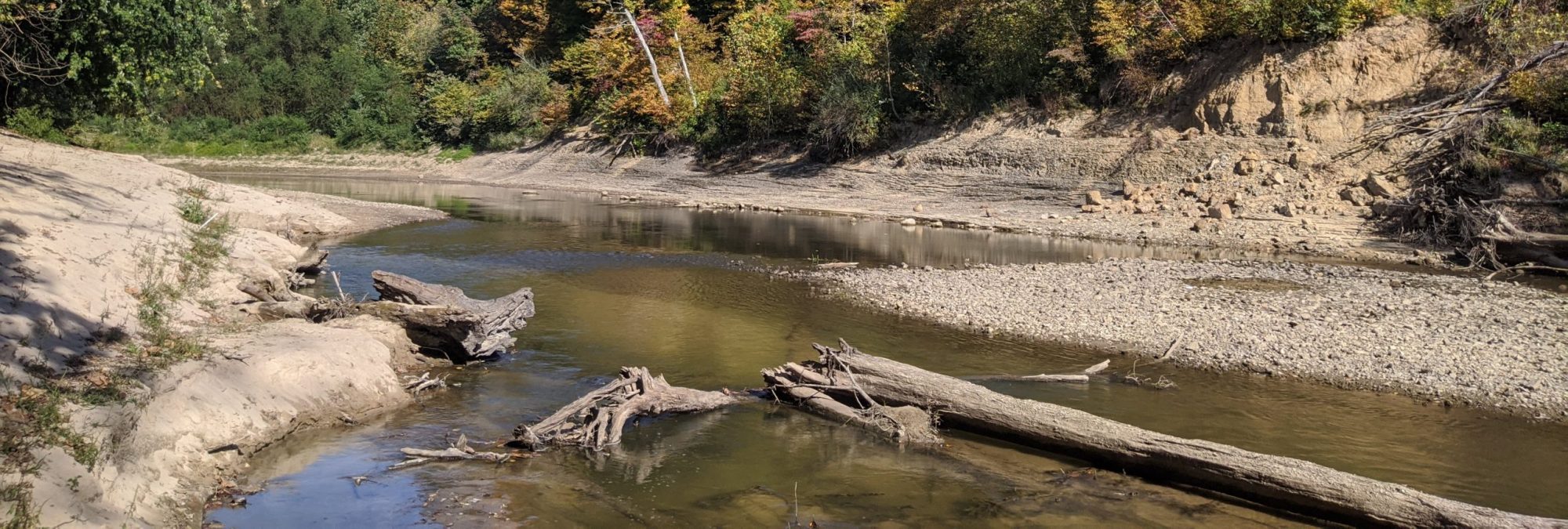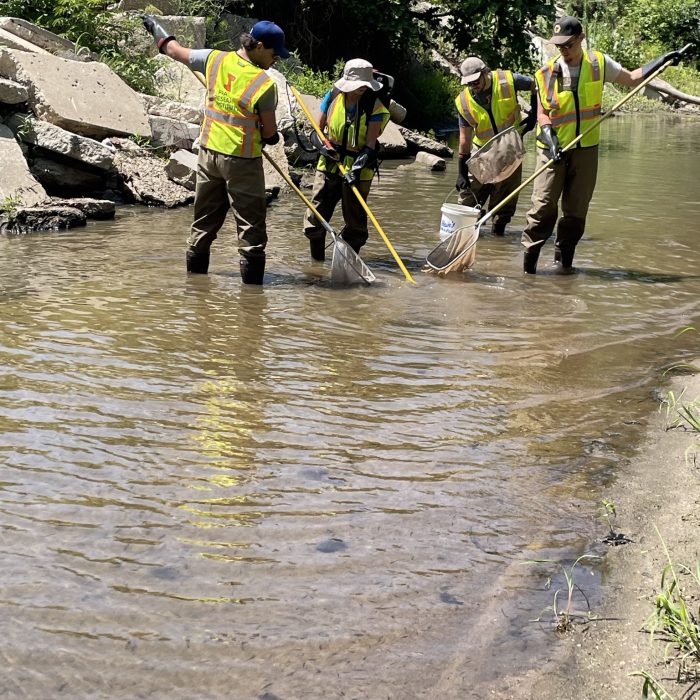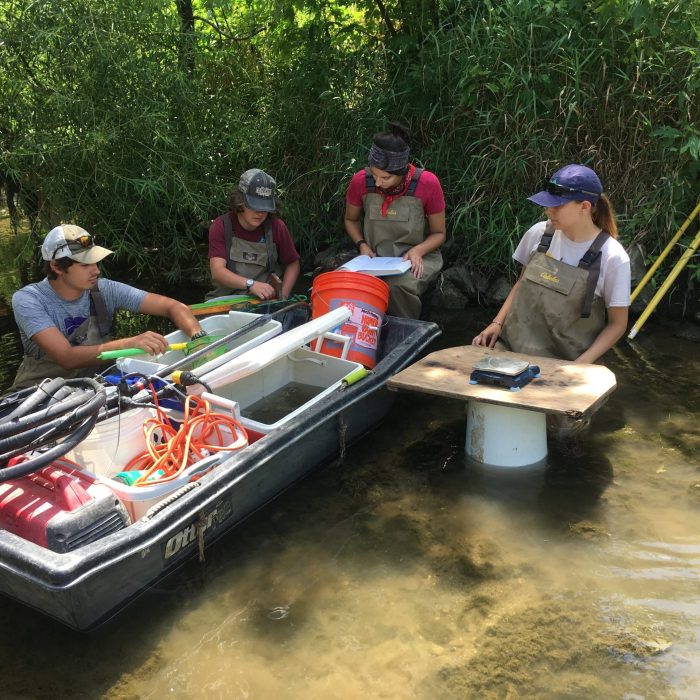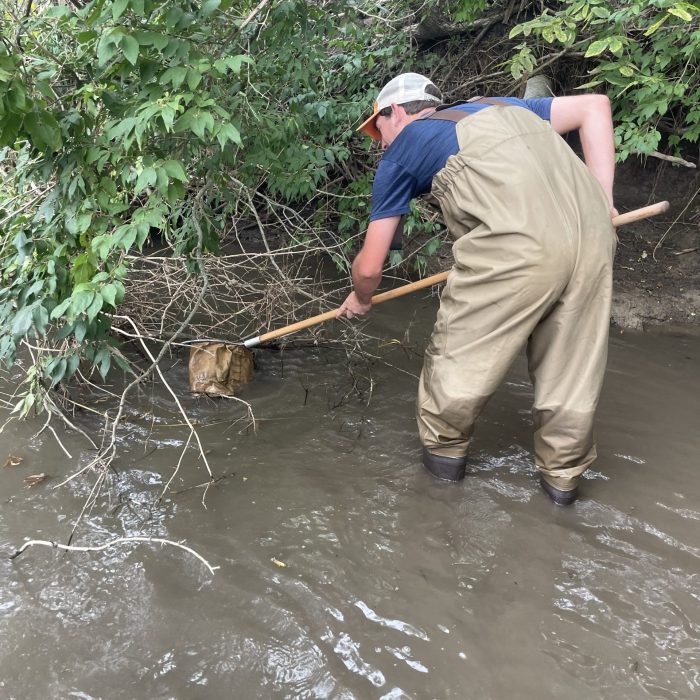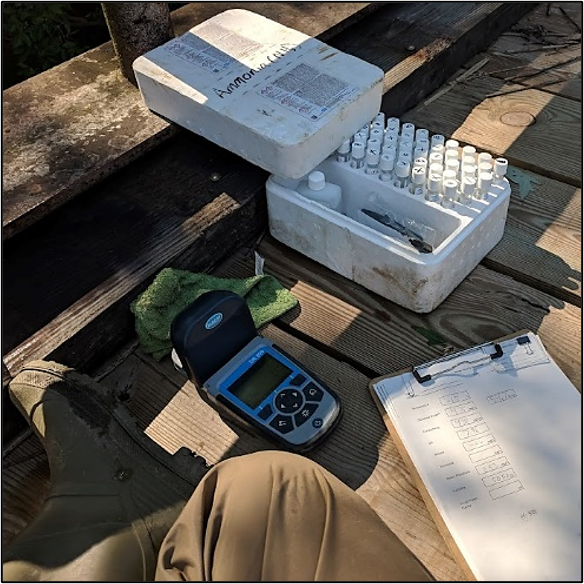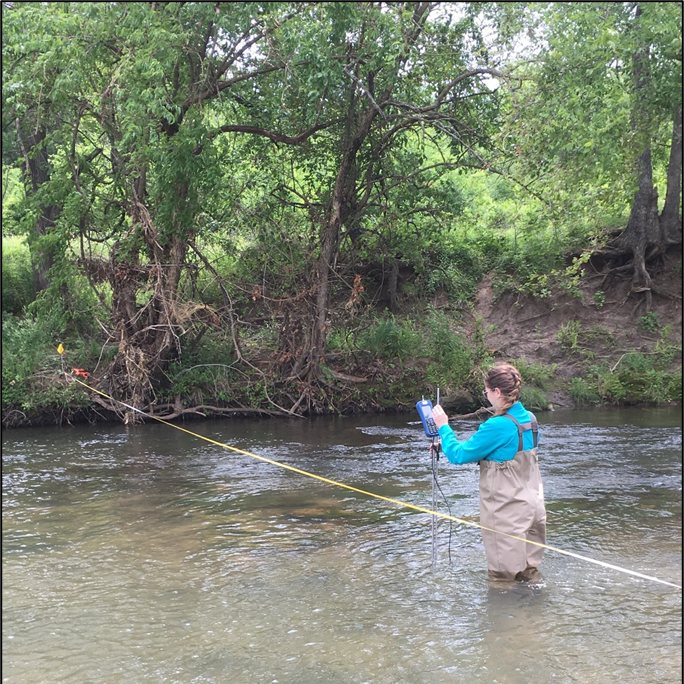The Aquatic Life Goal Monitoring project assesses how the Conservation Reserve Enhancement Program (CREP) impacts stream habitat, fish communities, and benthic macroinvertebrate communities in the Illinois River and Kaskaskia River basins.
What is CREP?
The Illinois Conservation Reserve Enhancement Program (CREP) is a private lands conservation program run in partnership by the U.S. Department of Agriculture (USDA), the Illinois Department of Natural Resources (IDNR), and the Soil and Water Conservation Districts (SWCDs). Private landowners enroll frequently flooded and environmentally sensitive croplands, and receive compensation for implementing conservation practices. Illinois CREP was established in the Illinois River Basin in 1998, and the Kaskaskia River Basin in 2010. Since then, 1,324 parcels covering 90,000 acres have been enrolled. The goals of Illinois CREP are to:
- Goal 1: Establish and maintain decreasing long-term trends in annual sediment, nitrogen, and phosphorus loading within the Illinois and Kaskaskia watersheds.
- Goal 2: Increase the population of avian species of greatest conservation need, as defined in the Illinois Wildlife Action Plan, on land enrolled in CREP by at least 50 percent when compared to similar land managed for agricultural production.
- Goal 3: Increase the number of native fish species and environmentally sensitive aquatic insects (stoneflies, caddisflies, and mayflies) on average by 15 percent within stream reaches associated with land enrolled in CREP when compared to similar streams surrounded by land managed for agricultural production.
As part of the cooperative agreement with USDA, IDNR is responsible for monitoring and assessing the progress of CREP towards reaching the goals. With the opening of the Kaskaskia River to CREP enrollments in 2010, IDNR initiated a monitoring program focused on assessing the biological effects of CREP on Illinois streams. Since 2012, the Illinois Natural History Survey has led the CREP Aquatic Life Monitoring Project.
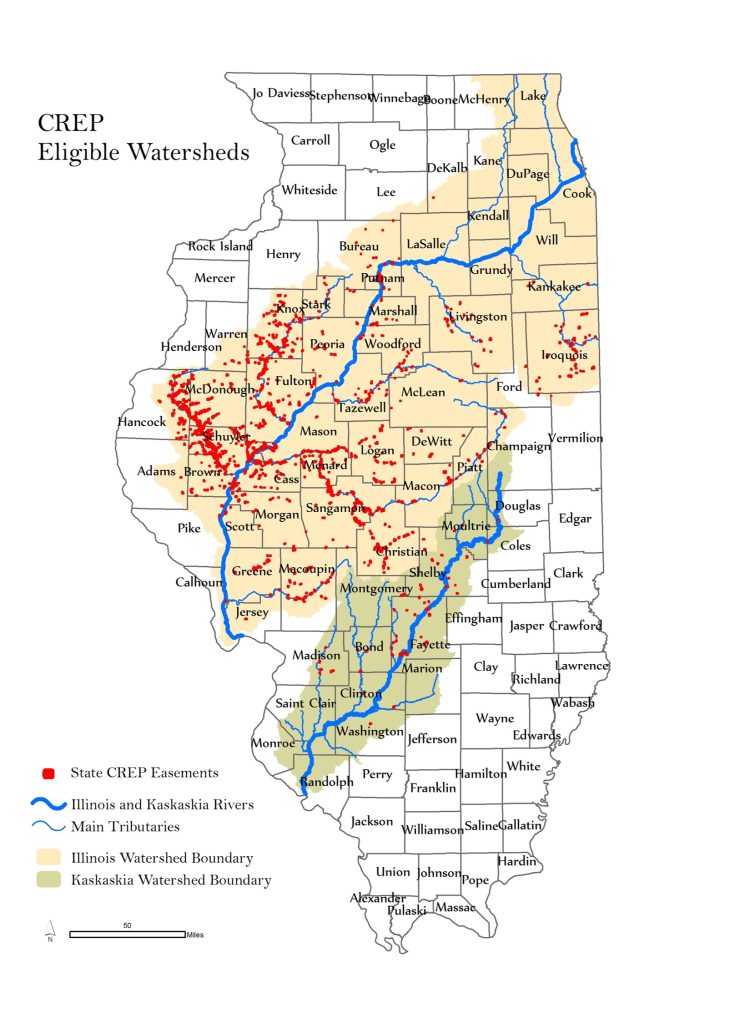
Stream Monitoring Surveys
Annual stream surveys are conducted by the INHS CREP Aquatic Life Monitoring team in wadable tributaries of the Illinois River and Kaskaskia River basins. The survey collects information on:
- Water quality and chemistry: water temperature, dissolved oxygen, conductivity, pH, nitrate-nitrogen, ammonia-nitrogen, orthophosphate, visual water clarity, and turbidity
- Stream Discharge: water volume flowing through a site per second
- Stream Habitat: physical characteristics of the stream and riparian zone measured for the Illinois Habitat Index (IHI) and Qualitative Habitat Evaluation Index (QHEI)
- Benthic Macroinvertebrate Community: 20 D-frame samples taken in microhabitats proportionally to their presence in the sampling reach
- Fish Community: single-pass electrofishing using backpack or electric seine
Project Study Design
Phase I-III (2013-2020)
The initial phase of the project aimed to establish a basin-wide assessment of aquatic life in streams in the Kaskaskia River basin. Phase I also evaluated the status of known populations of sensitive species and produced two master’s theses investigating the relationship of fish assemblages and benthic macroinvertebrate assemblages to CRP density.
Phase II continued basin-wide and sensitive species monitoring. Focal reaches were established to add more standardized comparisons with fewer confounding factors. Technical support for the CREP program began and conservation priority areas were identified.
Phase III continued basin-wide and focal reach monitoring. Least-disturbed sites, stream sites with greater than 50% natural land use types (e.g., forest, grasses, wetland) in the upstream watershed, were established to assess the best-attainable biological conditions of streams in the Kaskaskia River basin. In total, 337 sites were sampled in the Kaskaskia River basin during Phases I-III.
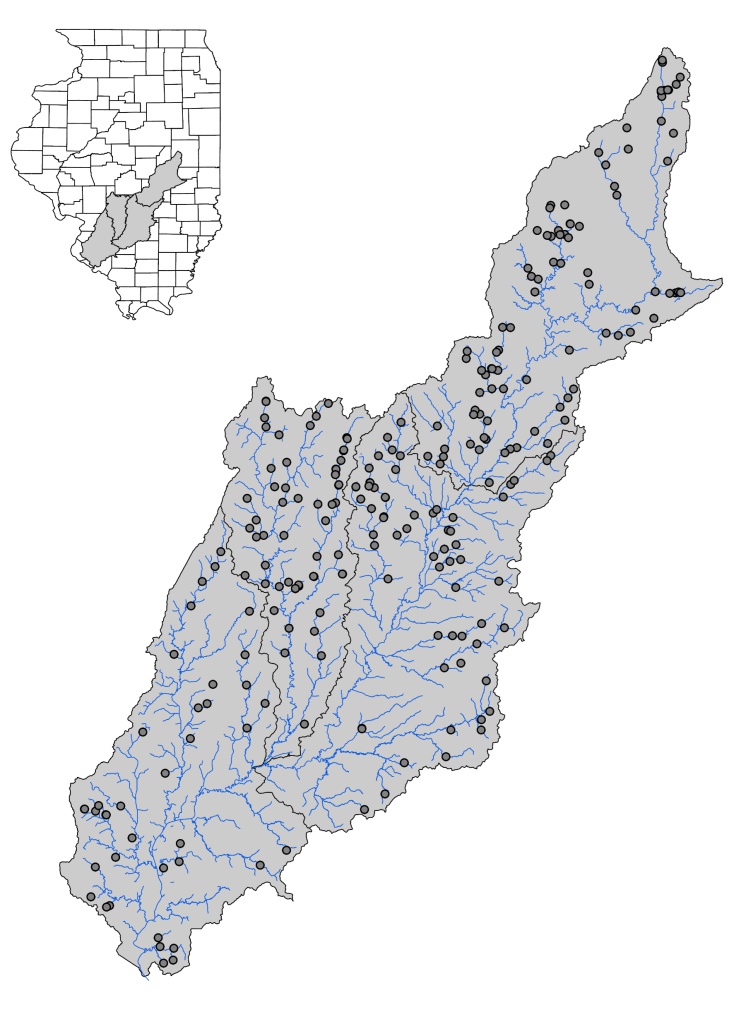
Phase IV (2021 – ongoing)
Phase IV implemented a new study design (explained below), and sampling was expanded into the Illinois River basin. In total, 77 stream surveys were completed in Phase IV.
Objective 1 – Aquatic Life Goal Monitoring
The main objective of Phase IV is to assess progress toward the aquatic-life goals of CREP. For this monitoring, fixed pairs will be established in each basin and sampled biennially. Each pair consists of a site in a stream reach associated with CREP, and a site upstream in a reach with higher agricultural land use. The upstream site will be a benchmark to estimate the biological impact of CREP.
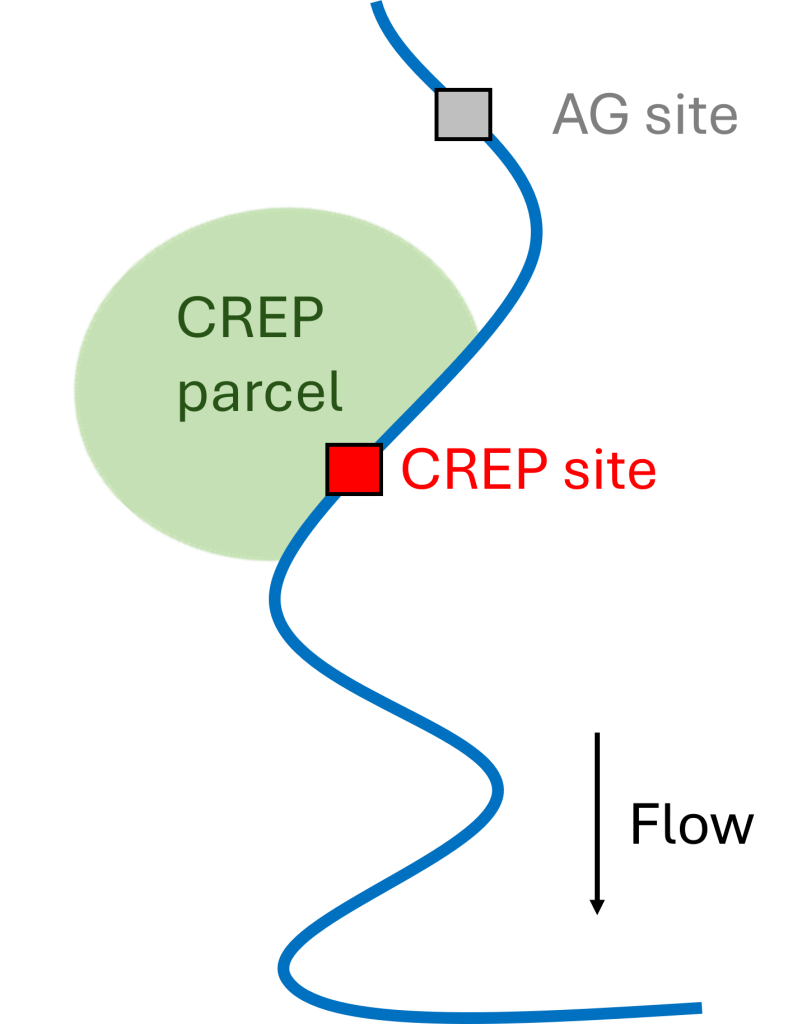
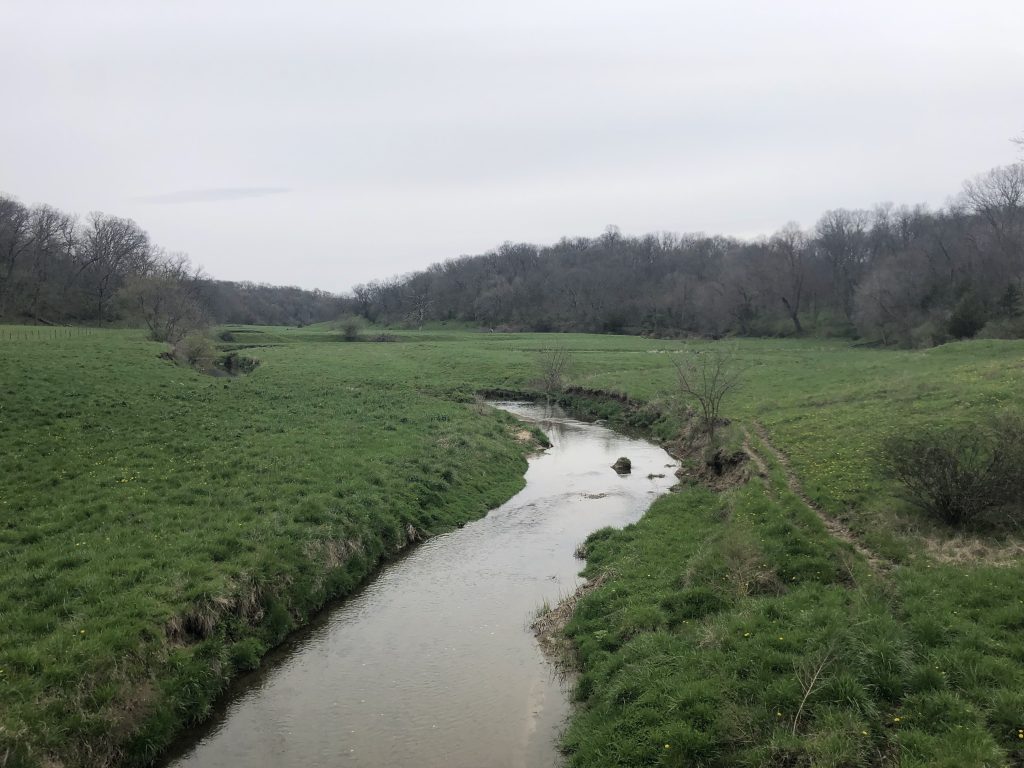
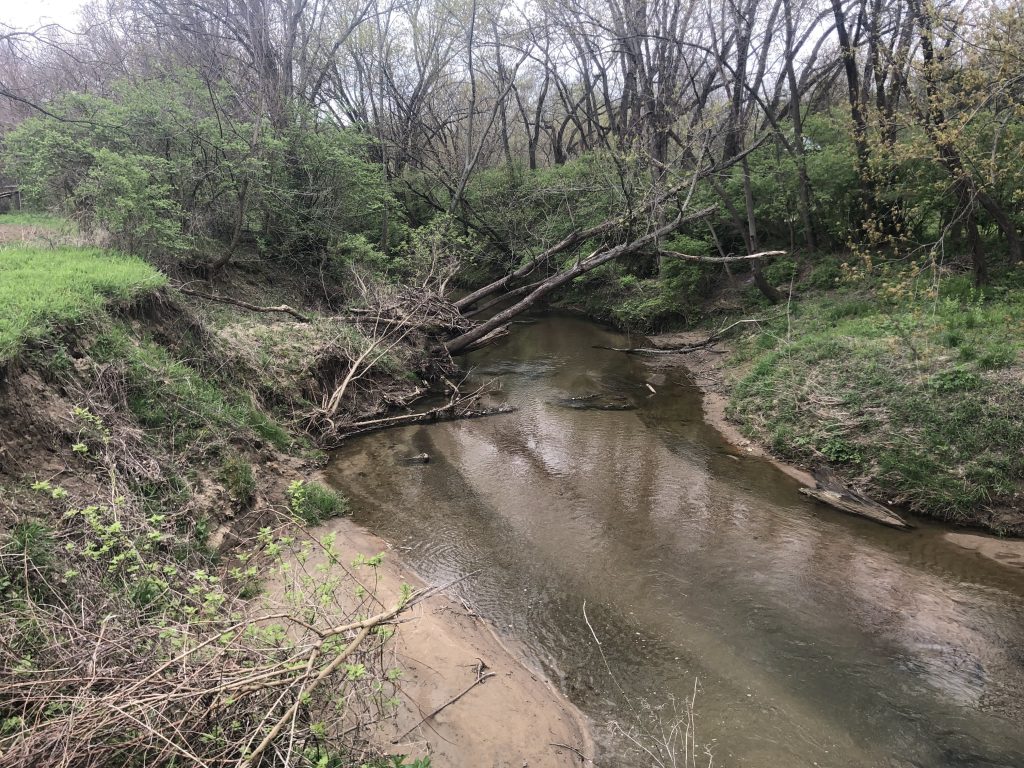
Right: The same stream, but adjacent to a forested CREP parcel.
Objective 2 – Least Disturbed Stream Monitoring
As in previous phases, a small number of least-disturbed sites will be sampled to characterize assemblages under the best-attainable environmental conditions. Fixed pairs will be established in each basin and sampled biennially. Each pair consists of a least-disturbed site located in a stream reach associated with greater than 50% natural land use, and an upstream site under agricultural settings. The upstream site will estimate the biological impact of the natural land use at the least-disturbed site. The results will help establish the “ceiling” of the aquatic-life goal of CREP in the basins.
Objective 3 – BACI-Based Monitoring
Two new CREP enrollments will be selected as treatment streams in a Before-After-Control-Impact study (BACI). The BACI study design will isolate the impact of CREP on stream biota by comparing the CREP stream (“treatment”) to a similar stream in the region (“control”) before and after conservation practices are implemented at the CREP parcel. To account for potential disturbances in the CREP stream other than CREP, an “upstream impact” site will also be sampled. All the associated sites will be sampled at least once before and periodically for at least ten years after the establishment of CREP. The results will help identify if CREP significantly benefits stream biota and habitats, and how long it takes to demonstrate measurable effects.
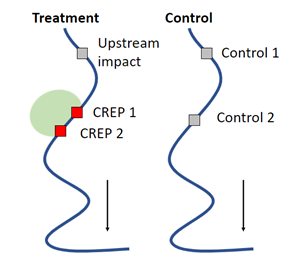
Objective 4 – Biological Monitoring of ISWS sites
The Illinois State Water Survey (ISWS) operates gaging stations in the Illinois River and Kaskaskia River basins that continuously monitor flow, nutrients, and sediments to assess the nutrient and sediment reduction goals of CREP. We will sample stream biota at these stations once every three years. The biological data will be compared to the ISWS data to better understand how water quality improvement and flow changes contribute to aquatic life changes relative to the local habitat changes.
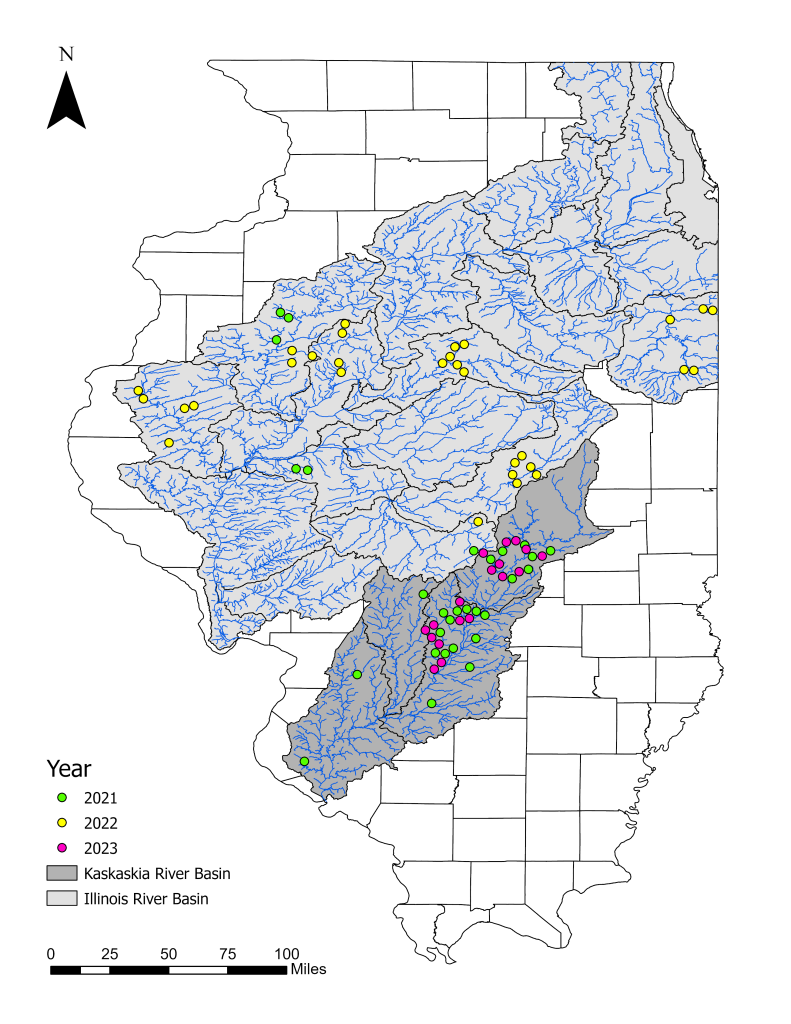
For more information, please visit:
If you have questions about the project, please contact Sarah Molinaro.
